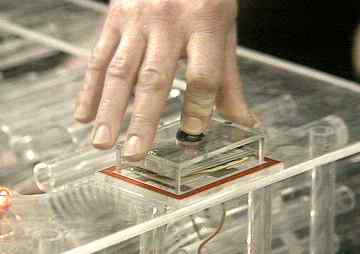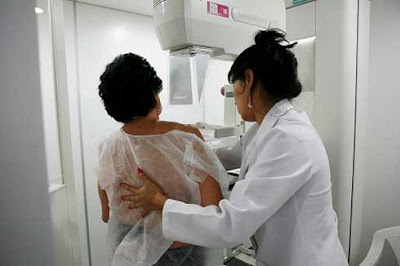Cancer Facts Biography
Source(goolge.com.pk)
Cells in the body normally divide (reproduce) only when new cells are needed. Sometimes, cells in a part of the body grow and divide out of control, which creates a mass of tissue called a tumor. If the cells that are growing out of control are normal cells, the tumor is called benign (not cancerous). If however, the cells that are growing out of control are abnormal and don't function like the body's normal cells, the tumor is called malignant (cancerous).
Cancers are named after the part of the body from which they originate. Breast cancer originates in the breast tissue. Like other cancers, breast cancer can invade and grow into the tissue surrounding the breast. It can also travel to other parts of the body and form new tumors, a process called metastasis.
What Causes Breast Cancer?
We do not know what causes breast cancer, although we do know that certain risk factors may put you at higher risk of developing it. A person's age, genetic factors, personal health history, and diet all contribute to breast cancer risk.
Who Gets Breast Cancer?
Breast cancer is the most common cancer among American women after skin cancer. Today, about 1 in 8 women (12%) will develop breast cancer in her lifetime. Breast cancer is the second-leading cause of cancer death in women (lung cancer is first). The American Cancer Society estimates that in 2012, about 226,870 women will be diagnosed with invasive breast cancer and about 39,510 will die from breast cancer.
Only 5% to 10% of breast cancers occur in women with a clearly defined genetic predisposition for the disease. The majority of breast cancer cases are "sporadic," meaning there is no direct family history of the disease. The risk for developing breast cancer increases as a woman ages.
What Are the Symptoms of Breast Cancer?
The symptoms of breast cancer include
Lump or thickening in or near the breast or in the underarm that persists through the menstrual cycle.
A mass or lump, which may feel as small as a pea.
A change in the size, shape, or contour of the breast.
A blood-stained or clear fluid discharge from the nipple.
A change in the feel or appearance of the skin on the breast or nipple (dimpled, puckered, scaly, or inflamed).
Redness of the skin on the breast or nipple.
A change in shape or position of the nipple
An area that is distinctly different from any other area on either breast.
A marble-like hardened area under the skin.
What Are the Types of Breast Cancer?
The most common types of breast cancer are:
Invasive ductal carcinoma . This cancer starts in the milk ducts of the breast. Then it breaks through the wall of the duct and invades the fatty tissue of the breast. This is the most common form of breast cancer, accounting for 80% of invasive cases.
Ductal carcinoma in situ (DCIS) is ductal carcinoma in its earliest stage (stage 0). "In situ" refers to the fact that the cancer hasn't spread beyond its point of origin. In this case, the disease is confined to the milk ducts and has not invaded nearby breast tissue. If untreated, ductal carcinoma in situ may become invasive cancer. It is often curable.
Infiltrating (invasive) lobular carcinoma. This cancer begins in the lobules of the breast where breast milk is produced, but has spread to surrounding tissues or other parts of the body. It accounts for about 10% of invasive breast cancers.
Lobular carcinoma in situ (LCIS) is cancer that is only in the lobules of the breast. It isn't a true cancer, but serves as a marker for the increased risk of developing breast cancer later. Thus, it is important for women with lobular carcinoma in situ to have regular clinical breast exams and mammograms.
In addition, there are several other less common types of breast cancer.
























